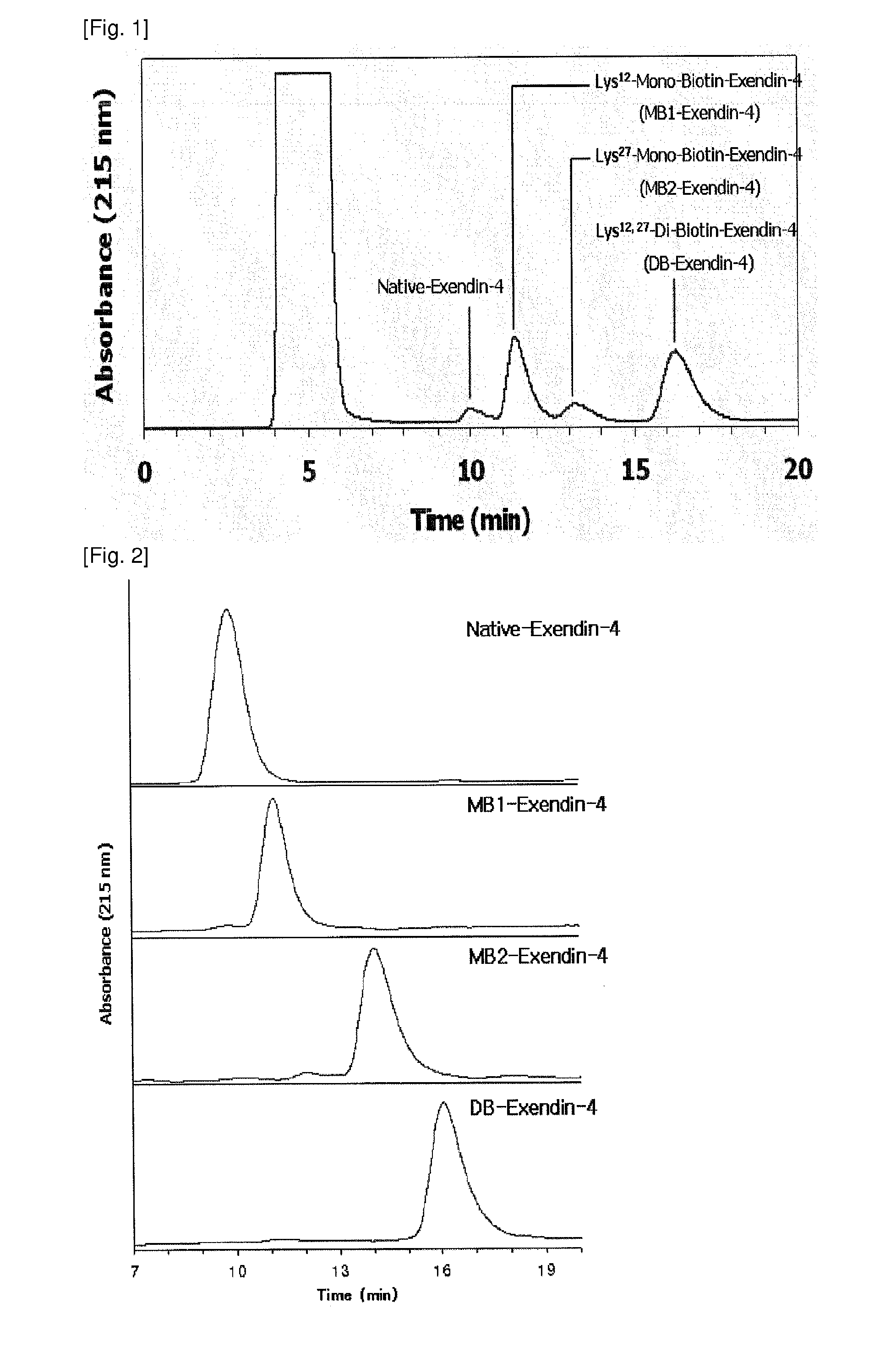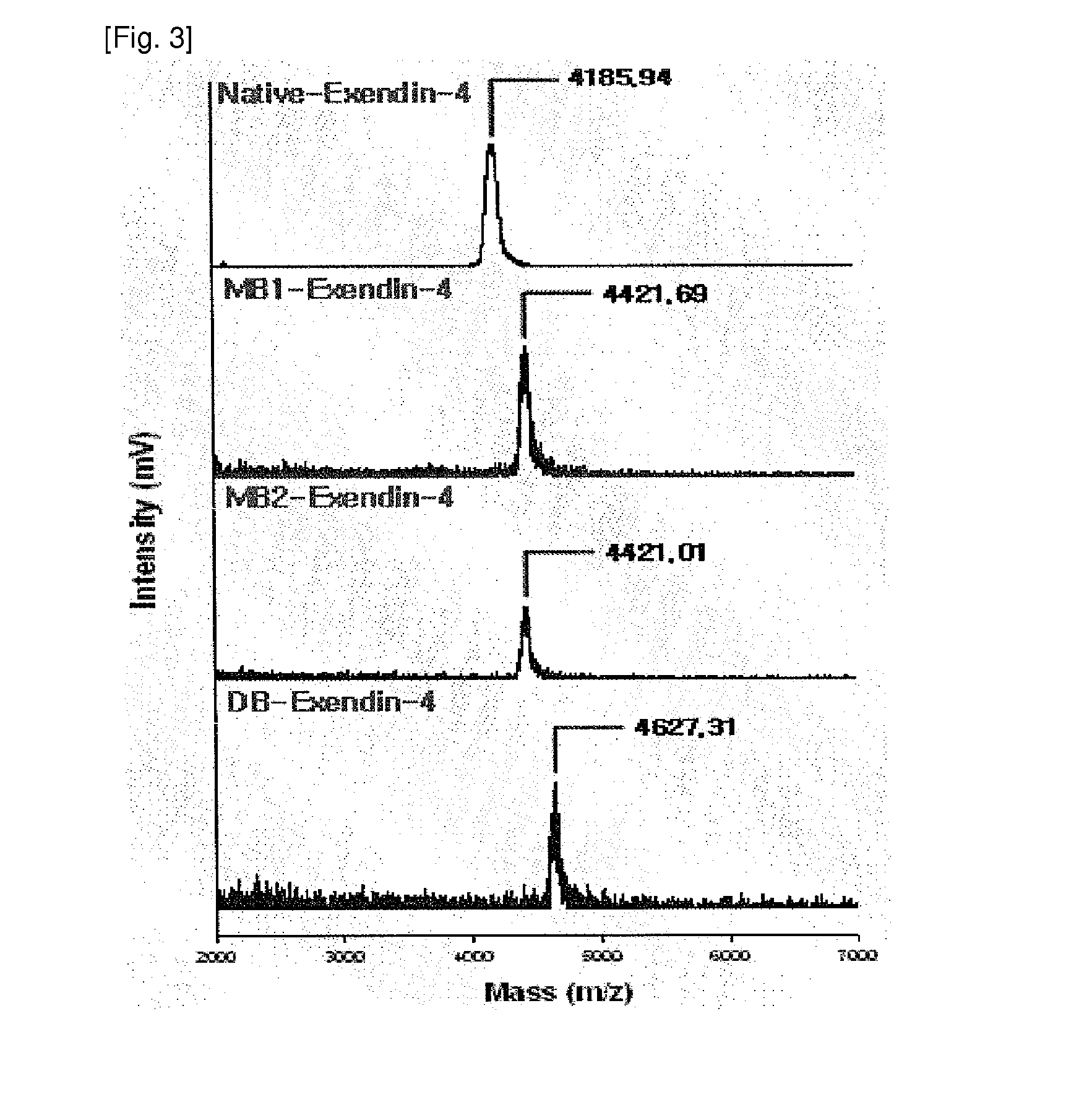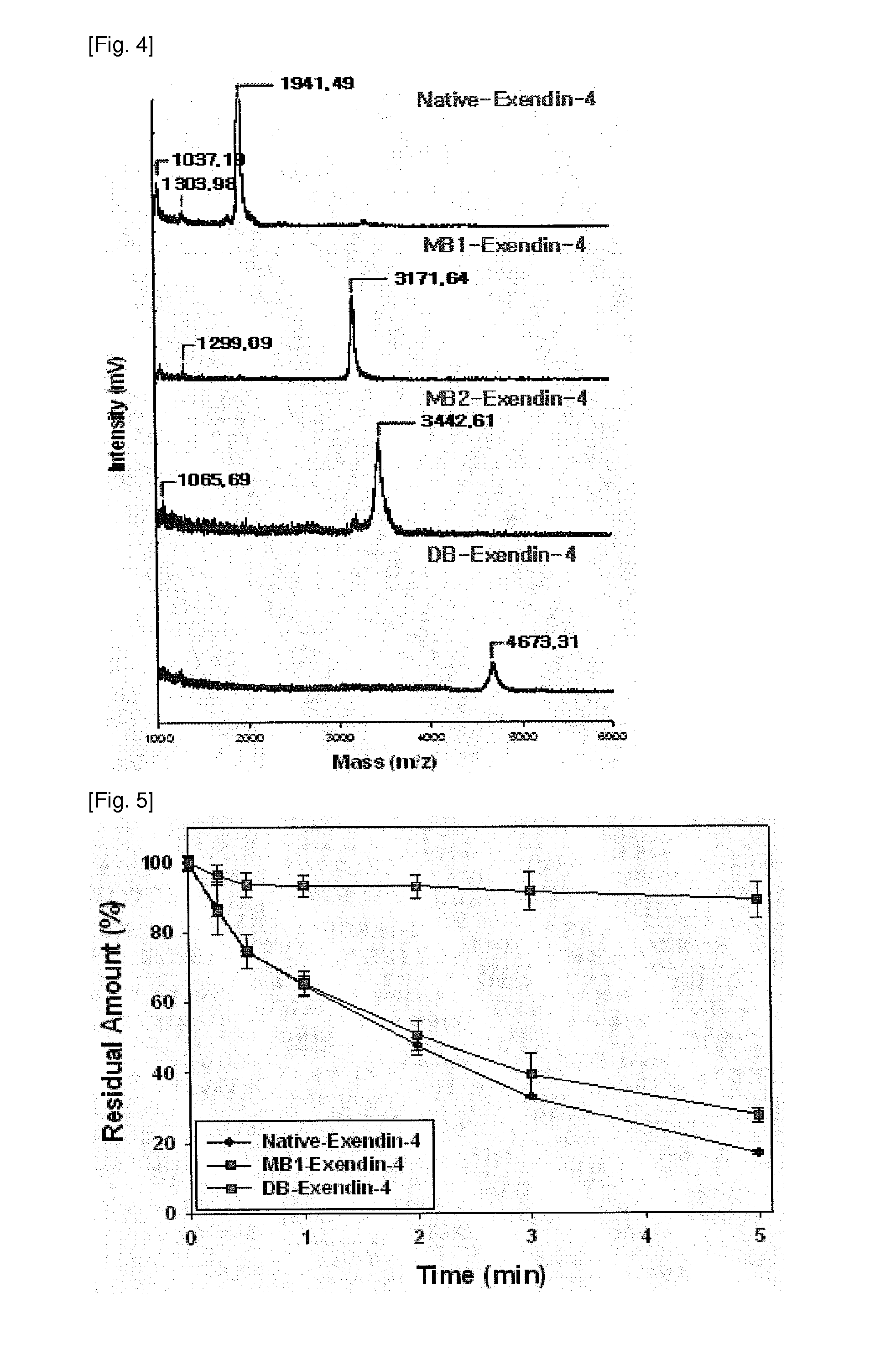Exendin derivative linked biotin, method for the preparation thereof and pharmaceutical composition comprising the same
- Summary
- Abstract
- Description
- Claims
- Application Information
AI Technical Summary
Benefits of technology
Problems solved by technology
Method used
Image
Examples
example 1
Preparation of Exendin-3 or Exendin-4 Derivatives Modified with Biotin
[0047]100 μl of triethylamine (TEA) (Sigma, 9% TEA-containing DMSO solution) was added to 100 μl of exendin-3 or exendin-4 (Bachem, 10 mg / ml in 0.3% TEA-containing DMSO solution), and then 100 μl of biotin-NHS (Sigma, 0.8 mg / ml in 0.3% TEA-containing DMSO solution) was added thereto and well stirred. The molar ratio of exendin-3 or exendin-4 to Biotin-NHS was 1:2, and the mixture was allowed to react at room temperature for 60 minutes. The reaction was stopped with 300 μl of 1% trifluoroacetic acid (TFA)-containing distilled water.
example 2
Separation, Purification and Analysis of Exendin-3 or Exendin-4 Derivatives Modified with Biotin
[0048]The exendin-4 derivatives, prepared in Example 1, were separated using reverse-phase high-performance liquid chromatography (hereinafter referred to as “RP-HPLC”). As columns, Jupiter RP-18 (250×10 mm, 5 Phenomenex, USA) and Capcell-pak RP-18 (250×4 mm, 5 μm, Shiseido, Japan) were used, and as mobile phase solvents, 36-41% solvent B (0.1% TFA-containing acetonitrile) and 64-59% solvent A (0.1% TFA-containing distilled water) were used. The mobile phase was linearly changed while maintaining a flow rate of 1 ml / min. Each peak was quantified using a UV spectrophotometer at 215 nm. The biotin-modified exendin-3 or exendin-4 derivatives, prepared through the above-described method, were analyzed with a MALDI-TOF mass spectrometer to determine the number of biotin conjugates. Also, the derivatives were digested with the protease lysine-C, and then analyzed with a MALDI-TOF mass spectrome...
example 3
Analysis of Biological Stability of Exendin-4 Derivatives Modified with Biotin
[0051]The biological stability of the modified exendin-4 derivatives, prepared and separated in Examples 1 and 2, was performed through the analysis of time-residual amount using trypsin, which is an enzyme mainly degrading exendin-4, and an intestinal homogenate.
[0052] Analysis of Stability of Biotin-Modified Exendin-4 Derivatives in Trypsin Enzyme
[0053]20 μl of each of exendin-4 and biotin-modified exendin-4 derivatives was added to 2 μl of 2 mM trypsin (25 mM phosphate buffer, pH 6.5) and then allowed to react in aqueous solution at 37° C. The reaction was stopped with 100 μl of 1% TFA-containing distilled water, and each reaction solution was analyzed using HPLC at varying points of time. The HPLC analysis was performed in the same manner as described in Example 2, and was carried out using a 36˜42% solvent B as a mobile phase at a flow rate of 1 ml / min for 10 minutes.
[0054]FIG. 5 shows the results of ...
PUM
| Property | Measurement | Unit |
|---|---|---|
| Molar ratio | aaaaa | aaaaa |
| Stability | aaaaa | aaaaa |
Abstract
Description
Claims
Application Information
 Login to View More
Login to View More - R&D
- Intellectual Property
- Life Sciences
- Materials
- Tech Scout
- Unparalleled Data Quality
- Higher Quality Content
- 60% Fewer Hallucinations
Browse by: Latest US Patents, China's latest patents, Technical Efficacy Thesaurus, Application Domain, Technology Topic, Popular Technical Reports.
© 2025 PatSnap. All rights reserved.Legal|Privacy policy|Modern Slavery Act Transparency Statement|Sitemap|About US| Contact US: help@patsnap.com



